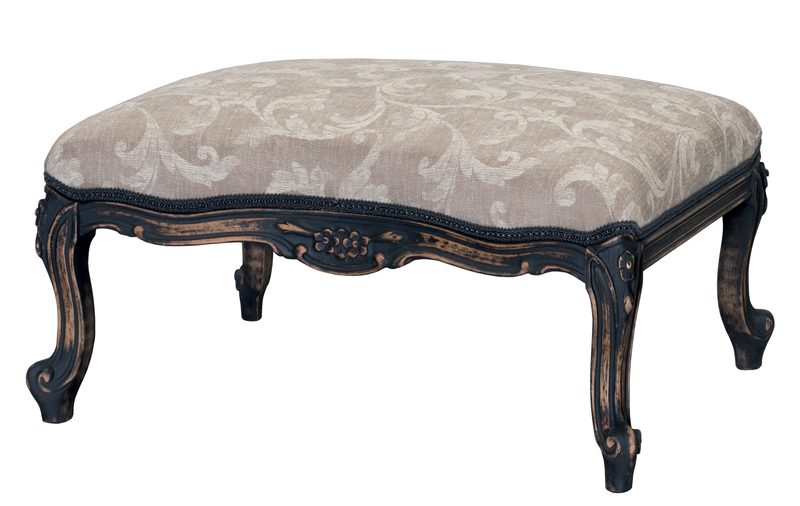The Dos and Don'ts of Disposing of Pots and Pans
Disposing of old cookware isn't as simple as tossing it in the trash or donation bin. Properly disposing of pots and pans ensures not only environmental responsibility but may also support local charities or creative reuse initiatives. From nonstick pans to cast iron skillets and stainless steel pots, every type has its own disposal quirks. In this comprehensive guide, learn the top tips on how to get rid of pots and pans the right way, what to avoid, and greener alternatives for your old cookware.
Why Proper Disposal of Pots and Pans Matters
Many people overlook the impact of disposing of cookware improperly. Cookware can contain materials such as nonstick coatings, metals, and additives that may harm the environment. Tossing them into the general trash or recycling without care can also disrupt recycling operations or contaminate waste streams. By understanding the dos and don'ts of getting rid of pots and pans, you help reduce landfill waste, support eco-friendly initiatives, and maybe even give unusable pots a new life.

Types of Pots and Pans: Materials and Concerns
Before you start the disposal process, it's important to identify the material of your pots and pans. This affects how you dispose of them. Here are some of the most common types:
- Stainless Steel - Durable, non-reactive, and easily recyclable, but not always accepted curbside.
- Cast Iron - Heavy, extremely durable, and recyclable, but not normally accepted in household recycling bins.
- Aluminum - Lightweight and recyclable, but coated versions may not be accepted by all facilities.
- Nonstick (Teflon-coated) - Often contain synthetic coatings that must be thoroughly considered for safe disposal.
- Copper - Valuable and recyclable, but sometimes combined with other materials that complicate disposal.
- Ceramic and Enamel - May not be recyclable, depending on local guidelines and the presence of metal.
Each type has unique dos and don'ts, which we'll explore in depth.
The Dos of Disposing of Old Pots and Pans
When it comes to the proper disposal of cookware, follow these essential dos to ensure your old pots don't become a burden to the environment or to facilities.
1. Do Check Local Recycling Guidelines
- *Research your municipal recycling program before discarding pots and pans. Many curbside programs do not accept cookware due to its size, coatings, or metal content.*
- Contact your local recycling center directly to ask if they accept pots and pans, especially those made of metal, and whether they require them to be disassembled or stripped.
- If recycling pickup isn't an option, find a nearby scrap metal facility, which usually accepts old pans, especially if they're entirely metal.
2. Do Consider Donating Usable Cookware
- If your pots and pans are in good condition, consider donating them to local thrift stores, shelters, food pantries, or community kitchens.
- Double-check donation guidelines; some organizations won't accept cookware with scratches, dents, or worn nonstick coating.
- Clean and sanitize pots before donation to ensure they're ready for immediate use.
3. Do Upcycle or Repurpose
- Get creative! Old pots and pans can become planters, storage bins, bird baths, or decorative art pieces.
- Share your DIY upcycling projects on social media or in online community groups for inspiration and tips.
4. Do Prepare Pots and Pans for Recycling
- Remove non-metal components such as plastic handles, silicone grips, or glass lids.
- For nonstick pans, check if your recycler accepts Teflon-coated cookware or if there are special requirements.
- Bundle pans by type (e.g., stainless steel, aluminum) for drop-off at scrap metal facilities to speed up sorting.
5. Do Dispose of Hazardous Materials Properly
- If your nonstick pan is heavily scratched or peeling, ask your local hazardous waste site if it should be treated as hazardous refuse.
- Some old pans may contain lead, especially vintage or imported ones. Lead-containing cookware should be disposed of according to hazardous waste guidelines.
The Don'ts of Disposing of Pots and Pans
Not all disposal methods are safe, legal, or responsible. The following list outlines what to avoid when getting rid of cookware.
1. Don't Toss Cookware in Your Curbside Bin Without Checking
- Many recycling programs reject pots and pans because they can damage machinery or introduce contaminants.
- Tossing cookware with general recyclables may result in the entire batch being sent to landfill.
2. Don't Donate Damaged or Unsafe Cookware
- Items with warped surfaces, missing handles, or flaking nonstick coatings are unsuitable for donation and may even be unsafe to use.
- Sending dangerous items to charities creates extra work and risk for their volunteers and staff.
3. Don't Burn, Bury, or Dump Pans Outdoors
- *Burning or burying cookware is hazardous*; metals and coatings can release harmful chemicals or leach into soil and groundwater.
- Illegal dumping is subject to fines and damages the local ecosystem.
4. Don't Mix Materials Before Recycling
- Separate materials whenever possible. Mixed-material cookware (e.g., aluminum pans with plastic handles) must be disassembled for proper recycling.
- Failure to separate components may result in your items being rejected at the recycling center.
How to Dispose of Different Types of Cookware
Now, let's break down the best way to get rid of specific pots and pans by material or type.
Disposing of Nonstick Pans
- Heavily scratched or peeling nonstick pans should not be donated or used further, as flaking coating can be harmful.
- Some nonstick pans are accepted by scrap metal recyclers if you remove the handle. Others should be sent to facilities that handle household hazardous waste.
- Contact your pan's manufacturer; select brands and retailers have take-back or recycling programs for their nonstick cookware.
Disposing of Cast Iron Cookware
- Cast iron pans are highly durable and often can be restored or seasoned for reuse.
- When disposal is truly necessary, drop them off at scrap metal recyclers. Their high iron content makes them valuable for scrap.
- Sharing with community cooking classes or food pantries is possible if the cookware is still usable.
Disposing of Aluminum Cookware
- Like cast iron, pure aluminum pans are sought by scrap facilities. Ensure any plastic or rubber parts are removed.
- Nonstick or enamel-coated aluminum may need to be separated or sent to specialty recyclers.
Disposing of Stainless Steel Pots
- Stainless steel pots can often be recycled at metal facilities provided handles or glass lids are removed in advance.
- Donation is great if the pot is in good, clean condition, as stainless steel lasts for decades.
Disposing of Copper and Specialty Pans
- Copper cookware is valuable as scrap, but composite pans might need to be dismantled.
- Avoid donation if interior linings (such as tin or enamel) are severely damaged.
Disposing of Ceramic and Enamel-Coated Pans
- These can't typically go in curbside recycling. Check with specialty recyclers or consider creative upcycling into planters or garden art.
- Donate only if surfaces are smooth and safe for food use--chipped ceramic or enamel could be unsafe.
Creative Ways to Reuse Old Pots and Pans
- Planters: Add drainage holes to transform old pans into outdoor or indoor plant containers.
- Serving Trays: Big cast iron pans are great for rustic serving platters at gatherings.
- Wall Decor: Paint or decorate worn-out pans to create unique kitchen art.
- Bird Feeders/Baths: Use shallow pans to attract feathered friends to your garden.
- Tool Storage: Old pasta pots can hold hand tools, garden twine, or small hardware.
Using pots and pans creatively not only reduces waste but also adds character to your home or garden.
Frequently Asked Questions About Disposing of Pots and Pans
Can you put pots and pans in the recycling bin?
In most cases, standard roadside recycling does not accept cookware, since the metals and coatings require specialized handling. Instead, take them to scrap metal recyclers or check for community recycling events.
Is it ok to donate nonstick pans?
Only donate nonstick pans that are in excellent, unscratched condition. Most charities or thrift stores do not accept damaged nonstick cookware for safety reasons.
How do I dispose of cookware with plastic handles?
Remove plastic handles before taking cookware to scrap metal recyclers. The plastic itself should be disposed of according to your local waste guidelines.
Are there any cookware brands with recycling programs?
Yes! Some manufacturers such as Calphalon and GreenPan offer take-back or recycling services for their old pans. Check their websites or reach out to their customer support for details on how to participate.

Eco-Friendly Options for Replacing Old Pots and Pans
Disposing of old cookware isn't just about eco-friendly practices--it's also about making better purchasing decisions going forward. When replacing, consider these environmentally responsible options:
- Choose cookware with recycled content, such as pans made from recycled aluminum.
- Select brands with take-back programs, helping to close the loop on old pan disposal.
- Opt for products with minimal or sustainable packaging when shopping for cookware.
Conclusion: Responsible Disposal Makes a Difference
Getting rid of old cookware doesn't have to weigh on your conscience or end up damaging the environment. Whether you're recycling metal pots and pans, donating usable pieces, or transforming them into something new, every action supports sustainability. By following these dos and don'ts of disposing of pots and pans, you'll prevent unnecessary landfill waste and maybe even inspire others in your community to think twice before simply tossing old pans. It's time to give your cookware a proper send-off--and maybe find some creative inspiration in the process!
